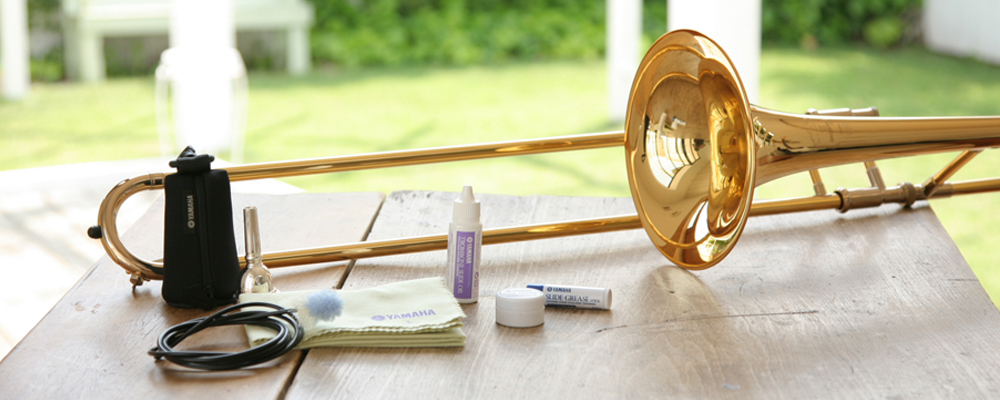Care and Maintenance of a Trombone
What do I need to do daily?
Prior to playing
Preparing the slide
-
1. First, clean any dirt from inside the slide, then apply a bit of slide cream (or slide oil) on the slightly thicker end sections of the slide (the stockings). Do not use slide grease.
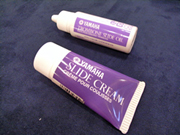
Top: Trombone slide oil Bottom: Slide cream
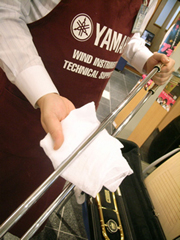
Cleaning the dirt from the inner slides
-
2. After applying slide cream, use a water spray bottle to moisten the slide sufficiently. If you used slide oil, just blow on it. You can use regular tap water in the water spray bottle, but it's better to use water without any chlorine in it, such as mineral water.
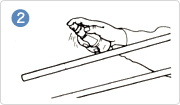
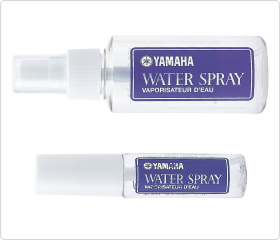
Water spray bottles (Top: Small; Bottom: Large)
-
3. Insert the inner slide into the outer slide, then slide the two sections back and forth several times to spread the cream evenly.
If the slide becomes sluggish while playing, moisten the slide with the water spray bottle. A small water spray bottle in your pocket could come in very handy when performing!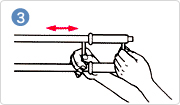
Oiling the rotary valve (tenorbass trombones and bass trombones)
On tenorbass trombones and bass trombones, apply rotor oil to the rotary valve through the slide receiver.
When to use slide cream and when to use slide oil
Slide cream and slide oil both allow the slide to move more smoothly. Which to use is up to personal preference. The condition of your instrument and the amount of cream or oil applied to it can also change how it feels to play, so it behooves you to discover what amount you feel most comfortable with. Incidentally, Yamaha slide oil contains an anti-rust agent to prevent the inside of the slide from rusting.
How much slide cream to apply
As a rule of thumb, you should apply only enough cream that the slide is still visible beneath it.
Advice
If the slide becomes sluggish 10 to 15 minutes after you start playing, you should have the slide checked at the shop.
If the slide is dirty the slide oil won't be able to lubricate it well. Prior to applying slide oil, be sure to thoroughly clean any dirt or moisture from the outside of the inner slide and the inside of the outer slide. Be careful however not to apply any unreasonable force on the slides when doing so.
After playing
Cleaning the slide
-
1. Open the water key to remove moisture from inside the slide section.
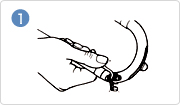
-
2. Wrap a polishing gauze around the cleaning rod so that the metal is not exposed, then clean inside the inner slide and outer slide. When you remove the cleaning rod, make sure there is no gauze left in the tube. Grip both the cleaning rod and gauze when pulling it out from the instrument. Always hold the slide brace when doing this.
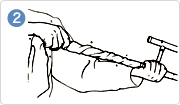

Wrap the cleaning rod with gauze, and rotate it slowly as you insert it into the outer slide to clean it.
Maintaining the exterior
The silver parts on a trombone's main slide and F attachment are surface-treated (finished) with the same lacquer as the other parts. The colors are different because the materials are different. The surface finish is the same for all surfaces. To maintain the exterior of the instrument, either wipe it gently with a polishing cloth, or polish it with a lacquer polish.
To clean dirt from a nickel-plated instrument (of if the lacquer is peeling and the surface is starting to rust), use a metal polish which includes a polishing agent. This will restore the luster of the metal.
What to do if the plating is peeling
If the paint (or plating) is peeling, you may notice copper rust (green-colored rust) on the bare metal surfaces of the instrument. Although you can remove it by polishing the instrument with a metal polish, if the rust forms on a part of the instrument that is often touched when playing it, you should have the instrument repainted (or re-plated) at the shop.
Musical Instrument Guide:Trombone Contents
Structure
How to Play
How the Instrument is Made
Choosing an Instrument
Care and Maintenance
Trivia
- God is in the trombone
- The trombone was a bit of a problem for cavalries...
- A trombone that would scare even a snake!
- Two instruments, both tenor, but quite different!
- A trombone player walks into pawnshop...
- You can trill just by moving your mouth
- It is possible to increase the pitch even as you extend the slide
- Famous pieces from trombone concertos
- Orchestra pieces in which the trombone plays an important role
- The Yamaha quartet
- For trombones, why does sheet music notation differ from the fundamental tone of the instrument?
- A bass trombone-with an F attachment only

